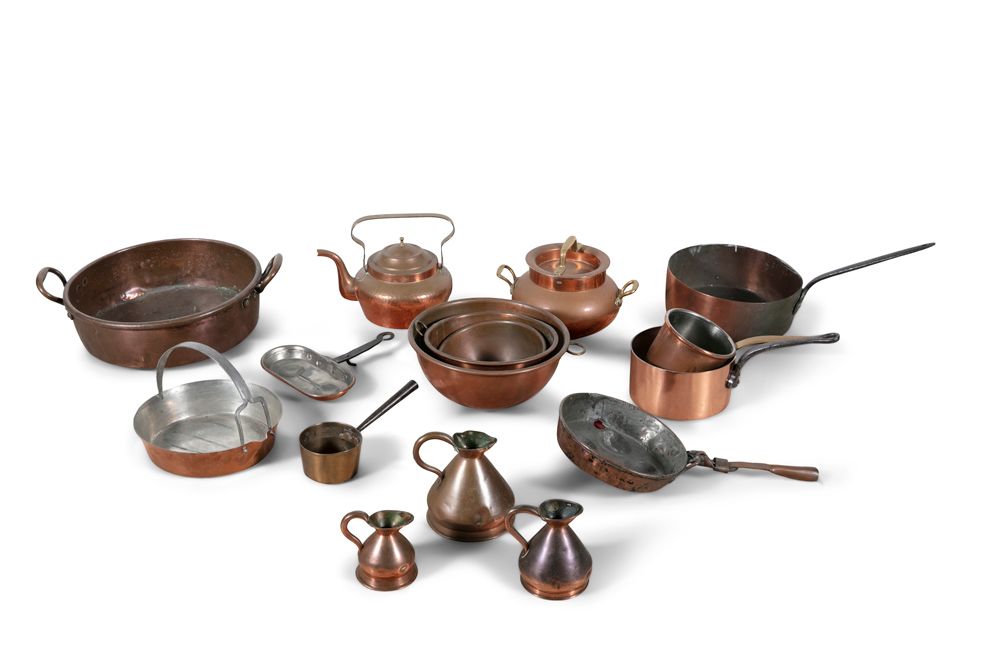Description
AN INTERESTING COLLECTION OF 19TH AND 20TH CENTURY KITCHEN COPPERWARE, including circular preserve pan, mixing bowls, saucepans, kettle and measures etc.
29
AN INTERESTING COLLECTION OF 19TH AND 20TH CENTURY KITCHEN COPPERWARE, including circular preserve pan, mixing bowls, saucepans, kettle and measures etc.
